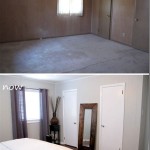How Much Does An Interior Designer Get Paid Per Year?
The compensation for interior designers varies considerably, influenced by a multitude of factors. These factors range from experience and education to geographic location and specialization. Understanding the salary landscape allows aspiring and established professionals to gauge their earning potential and strategize career development.
The Bureau of Labor Statistics (BLS) provides national average salary data, serving as a useful benchmark. However, it's important to recognize that this figure represents a generalized overview. Actual earnings can deviate significantly based on individual circumstances and market dynamics. Furthermore, many interior designers do not operate as traditional employees, opting instead for self-employment or contract work, which further complicates the salary picture.
The earning potential for an interior designer is multifaceted, encapsulating base salary, bonuses, commissions, and potential profit sharing. The specific blend of these income streams depends largely on the employment model – whether working for a design firm, a retail establishment, or operating independently.
Entry-level positions usually command lower salaries compared to those held by seasoned professionals. As designers accumulate experience and build a robust portfolio, they become more competitive and can justifiably command higher rates. Further specialized skills, such as expertise in sustainable design or healthcare design, can also translate into increased earning potential.
Experience and Education’s Impact on Salary
Experience is a primary driver of salary growth within the interior design field. An entry-level designer with minimal experience generally starts with a lower base salary. As they gain practical experience through project execution and client interaction, their value to employers and clients increases. This increased value translates directly into higher earning potential.
Junior designers typically spend several years learning the ropes, assisting senior designers, and gradually taking on more responsibility. During this phase, they are honing their skills, building their professional network, and establishing a track record of successful projects. Annual salary increases reflect this professional development.
Senior designers, with a significant track record of successful projects and client relationships, command the highest salaries. They often lead design teams, manage large-scale projects, and cultivate new business. Their expertise and experience are highly valued, justifying their higher compensation. Furthermore, senior designers often have greater opportunities to negotiate salaries and benefits.
While experience is crucial, education also plays a significant role, especially at the beginning of a career. A bachelor's degree in interior design or a related field is generally considered the minimum requirement for entry into the profession. A degree from a reputable program demonstrates a designer's foundational knowledge of design principles, technical skills, and industry standards.
Advanced degrees, such as a master's degree, can further enhance earning potential. A master's degree can provide specialized knowledge in areas like sustainable design, historic preservation, or healthcare design. This specialization can differentiate a designer from the competition and open doors to higher-paying positions.
In addition to formal education, professional certifications can also positively impact salary. Organizations like the National Council for Interior Design Qualification (NCIDQ) offer certifications that demonstrate a designer's competence and professionalism. Holding an NCIDQ certification can increase credibility and open doors to more lucrative career opportunities.
Geographic Location and Market Demand
The geographic location where an interior designer works significantly impacts their earning potential. Metropolitan areas with a high cost of living and strong demand for design services generally offer higher salaries compared to rural areas with a lower cost of living and less demand.
Cities like New York, Los Angeles, Chicago, and San Francisco are known for their vibrant design industries and high concentration of design firms and wealthy clients. These cities offer numerous opportunities for interior designers, but the competition is also fierce. The higher cost of living in these cities necessitates higher salaries to attract and retain talent.
On the other hand, smaller cities and rural areas may offer fewer opportunities and lower salaries. However, the cost of living in these areas is generally lower, which can partially offset the lower salaries. Furthermore, some designers may prefer the pace of life and community atmosphere in smaller towns.
Market demand for interior design services is another key factor influencing salaries. During periods of economic growth, demand for design services typically increases, leading to higher salaries. Conversely, during economic downturns, demand may decrease, resulting in lower salaries or even job losses.
Specific industry sectors can also influence market demand. For example, the demand for healthcare design services is often less sensitive to economic fluctuations compared to the demand for residential design services. Designers specializing in high-demand sectors may have better job security and earning potential.
Staying informed about local market conditions and industry trends is crucial for interior designers to maximize their earning potential. Networking with other professionals, attending industry events, and monitoring job boards can provide valuable insights into the current salary landscape.
Employment Model and Specialization
The employment model pursued by an interior designer significantly impacts their compensation structure. Designers can work as employees of design firms, retail establishments, or architectural firms, or they can operate independently as freelancers or business owners.
Employees typically receive a fixed salary, along with benefits such as health insurance, paid time off, and retirement contributions. The salary is often based on experience, education, and responsibilities. Employees may also receive bonuses or commissions based on performance.
Freelancers and independent designers have greater control over their income, but they also bear more responsibility for managing their finances and securing clients. They typically charge an hourly rate or a project fee. Their earning potential is directly tied to their ability to attract and retain clients, manage projects efficiently, and market their services effectively.
Business owners have the potential to earn the highest incomes, but they also face the greatest risks and responsibilities. They must manage all aspects of their business, including marketing, sales, project management, and finances. Their income is dependent on the overall profitability of their business.
Specialization within interior design can also significantly impact earning potential. Certain specializations, such as sustainable design, healthcare design, and hospitality design, are often in higher demand and command higher salaries.
Sustainable design focuses on creating environmentally friendly and energy-efficient spaces. With growing awareness of environmental issues, there is increasing demand for designers with expertise in sustainable design principles and practices.
Healthcare design focuses on creating healing and supportive environments for patients, staff, and visitors in healthcare facilities. This specialization requires specialized knowledge of healthcare regulations, infection control protocols, and patient needs. The specialized knowledge required often commands a higher salary.
Hospitality design focuses on creating inviting and functional spaces for hotels, restaurants, and other hospitality establishments. This specialization requires an understanding of branding, customer experience, and operational efficiency. The industry's dependence on creating unique experiences gives designers with this specialization leverage.
Developing expertise in a specialized area can differentiate a designer from the competition and open doors to higher-paying positions. Designers can gain specialized knowledge through continuing education courses, workshops, and on-the-job training.
In conclusion, the annual salary of an interior designer is a dynamic figure influenced by a confluence of interwoven factors. These factors include experience level, educational attainment, geographical location and market dynamics, the chosen employment model, and any areas of specialization undertaken. Understanding these elements provides valuable insights into navigating the profession and maximizing earning potential.

How Much Do Interior Designers Make

How Much Do Interior Designers Make

Interior Designers

How Much Do Interior Designers Make

Careers In Interior Design The Ultimate Guide Nyiad
Interior Designer Salaries What Can You Earn With The Ncidq Certificate

How To Become An Interior Designer Career Sidekick
Interior Design Jobs

Careers In Interior Design The Ultimate Guide Nyiad

Interior Designers
Related Posts








